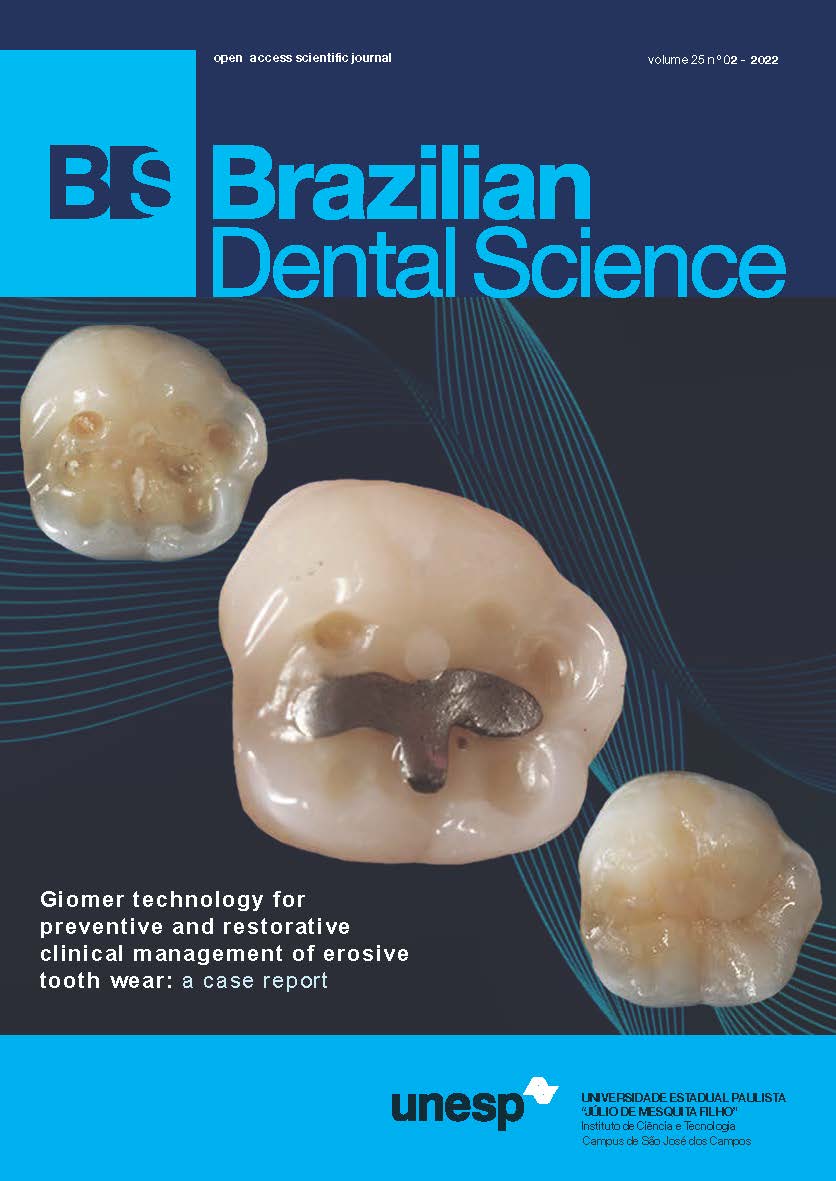Is enucleation followed by peripheral ostectomy and Carnoy’s solution application an adequate treatment for Odontogenic keratocyst? A case series with up to five years of follow up
DOI:
https://doi.org/10.4322/bds.2022.e3077Abstract
Objective: To evaluate the treatment outcome of enucleation and peripheral ostectomy with the use of Carnoy’s
solution for management of Odontogenic keratocyst. Material and Methods: 17 patients with OKC who reported
from 2011 to 2015 were included. All the cases were treated by enucleation and peripheral ostectomy of 0.5mm
followed by Carnoy’s solution cauterization for 4 minutes. All patients were followed up for 4-5 years. Results:
All the cases were followed-up by using serial panoramic radiography and clinical evaluation at regular intervals.
No recurrence was reported in any of the cases. Conclusion: Treatment of Odontogenic keratocyst by enucleation
and 0.5mm of peripheral ostectomy, followed by Carnoy’s solution cauterization for 4 minutes is an effective
treatment with zero recurrence rates for five years of follow-up.
KEYWORDS
Odontogenic keratocyst; Enucleation; Carnoy’s solution; Recurrence.
Downloads
Downloads
Published
How to Cite
Issue
Section
License
Brazilian Dental Science uses the Creative Commons (CC-BY 4.0) license, thus preserving the integrity of articles in an open access environment. The journal allows the author to retain publishing rights without restrictions.
=================




























